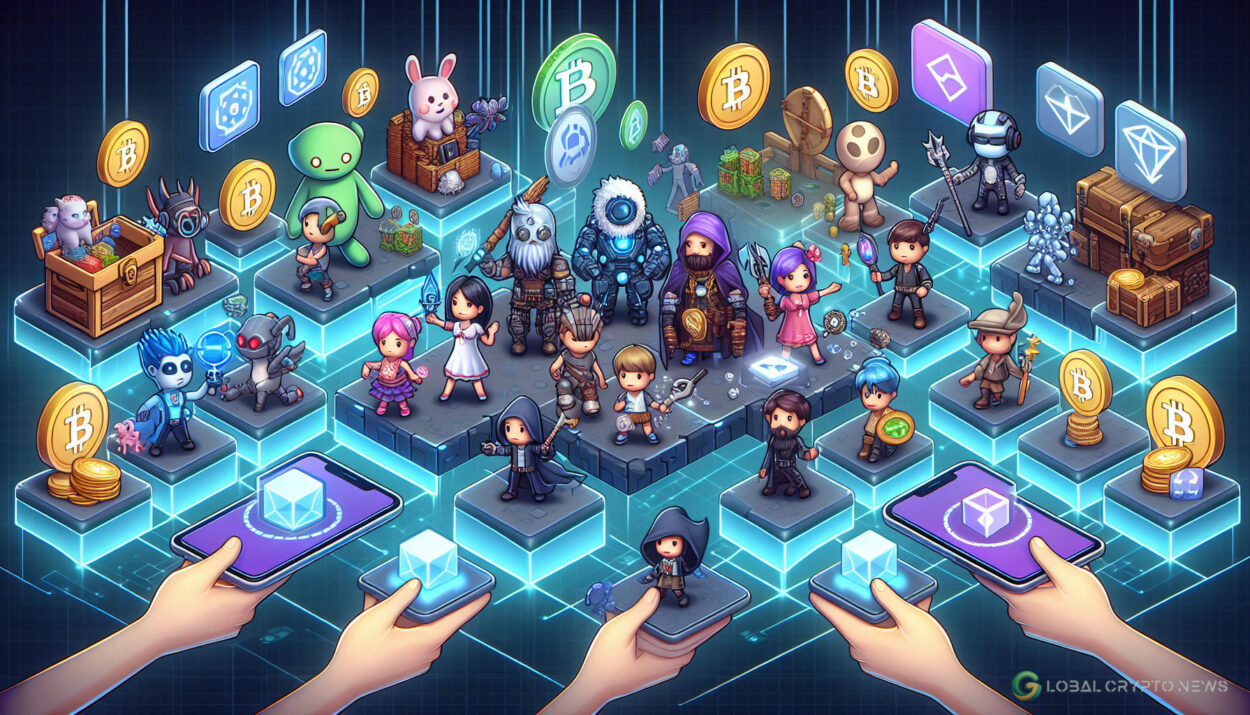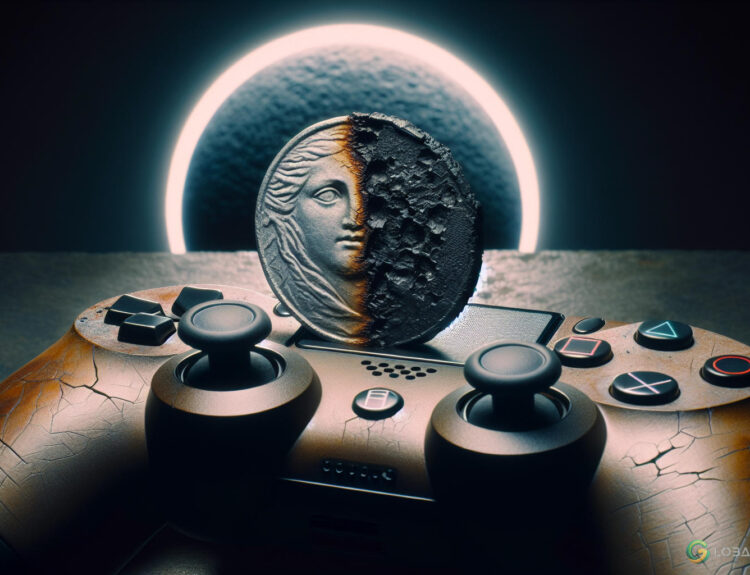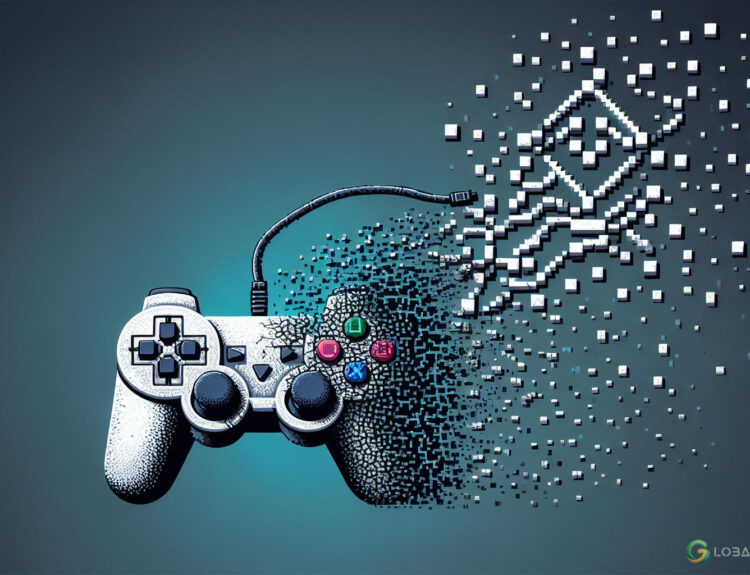Disclosure: The views and opinions expressed here belong solely to the author and do not represent the views and opinions of crypto.news’ editorial.
Web3 Gaming: The Future of GameFi
Web3 gaming has faced skepticism over the past few years. However, this industry has seen substantial changes in gameplay mechanics, reward models, and inclusivity factors. As a result, GameFi is emerging stronger than ever.
In the second quarter of 2024, blockchain gaming projects received $1.1 billion in investment—a 314% increase from the previous quarter. This positive investment sentiment is due to the growing adoption of web3 games, which now account for 28% of all dApp activity.
From Niche to Industry Standard
Web3 gaming is no longer a fleeting trend. Blockchain technology is now a crucial tool for the gaming industry, primarily because of its ability to offer true ownership of in-game assets. Players can own skins, characters, or items, creating real value that extends beyond a single title. Unlike traditional Web2 games, where in-game purchases remain tied to the game’s ecosystem, blockchain ensures true asset ownership and secure transactions, allowing players to trade or sell items across multiple platforms.
Investors have noticed this shift. The significant capital injection in Q2 2024 is just the beginning. Investors are now looking for games that offer long-term value, where blockchain mechanics complement the gameplay rather than overshadow it. This marks a new phase for GameFi, focusing on creating sustainable ecosystems for both players and developers.
Removing the Friction of Web3 Adoption
For blockchain gaming to achieve mainstream appeal, it must simplify web3 mechanics. One common critique from gamers unfamiliar with web3 is that it introduces unnecessary complications. Games should prioritize entertainment, whether they use blockchain or not. Blockchain gaming should add opportunities, not confusion.
The solution lies in seamless integration. Successful blockchain games make the underlying technology invisible to the player. They don’t need to understand the intricacies of NFTs or smart contracts. Players should experience a game where they can trade, own, and invest in digital assets without technical friction. Developers are focusing on making blockchain elements a ‘background’ technology that enhances the player experience rather than becomes the experience itself.
The Future of GameFi: Long-Term Vision and Strategic Investment
As the market matures, the focus is shifting from play-to-earn business models to competitive and efficient gaming environments. Many early P2E GameFi projects collapsed due to unrealistic tokenomics and shallow gameplay mechanics.
Games should not be built around profit motives alone. Fun and engaging gameplay must remain the priority, with blockchain providing opportunities for rewards and ownership as secondary benefits.
For example, Farcana initially launched as a P2E game but has now been rebranded as a “Bitcoin Shooter.” Players earn Bitcoin as a reward for mastering gameplay—not just for logging in or participating. This model encourages true player investment and skill development, moving away from short-term profit-seeking behaviors.
Games that value experience and competitiveness will resonate strongly with investors. Investors scrutinize the technology behind the games and the teams developing them. Building trust through transparent tokenomics and strong community engagement is essential.
Interoperability and Cross-Platform Potential
Another promising direction for GameFi is interoperability, where assets can be easily transferred from one game or platform to another. This cross-platform compatibility could revolutionize gaming. E-sports leaders envision a future where a sword obtained in one game can be used in another or where in-game money can be exchanged across different games, creating an additional layer of the economy.
This trend will drive GameFi adoption globally. Games can no longer function as stand-alone applications isolated from other titles. Players’ investments should be protected and have the potential to gain value in other experiences. The technology for this is already available. When developers focus on making games interoperable, they will attract both gamers and investors, revealing new monetization methods.
Security and Players’ Trust
As GameFi grows, security remains a critical concern. Many web3 gaming projects failed after 2021 due to underlying security vulnerabilities. The decentralized nature of blockchain offers solutions to traditional security problems in online gaming, such as fraud, hacking, and item theft. Blockchain’s immutable ledger ensures that assets are tied to players, protecting investments regardless of what happens to the game itself.
This ability to secure assets creates a trust-based ecosystem, crucial for mainstream adoption. Players need to feel confident that their in-game investments are safe, even if a game goes offline or a developer disbands. Blockchain’s security protocols, when implemented correctly, offer this peace of mind.
The Road Ahead
The gaming industry is moving towards a future where web3 technology becomes a standard feature of most games. Mass adoption is inevitable but will require strategic investment, seamless integration, and a focus on fun, accessible gameplay.
New projects must understand that it’s not just about earning quick profits—it’s about creating immersive, engaging worlds where blockchain technology enhances the experience without complicating it. The key to unlocking this growth will be balancing fun and accessibility while seamlessly integrating blockchain elements, ushering in the next generation of gaming.
Ilman Shazhaev is the founder and CEO of Farcana, a Bitcoin shooter game. An entrepreneur with a strong scientific background in AI, gaming, and web3, Ilman has developed healthtech and gametech solutions used worldwide. Recognized by the United Nations, he has authored 46 scientific papers and holds 10 invention patents. His journey in web3 began in 2017 with the founding of Oneboost, and his passion for gaming led to the creation of Farcana, reshaping the gaming landscape by integrating web3 elements into mainstream gaming.
#BullMarket #BitcoinPrice
























